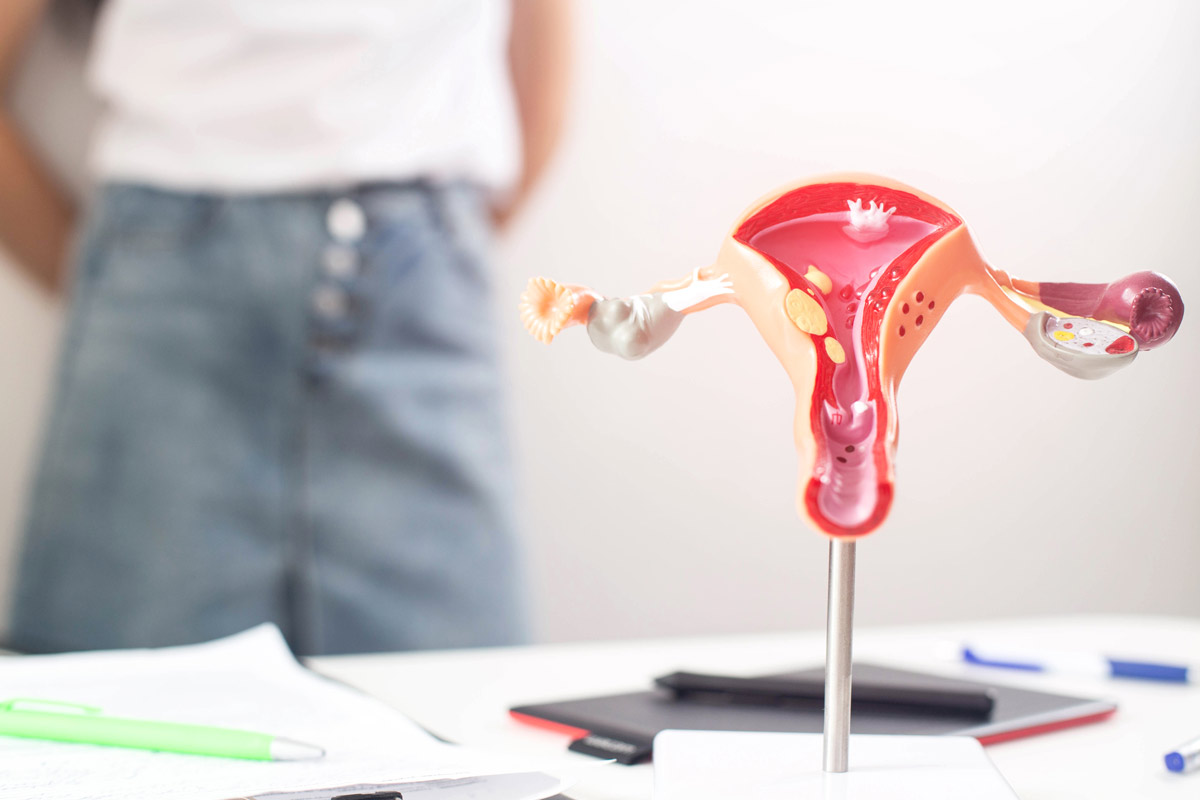Endometriosis is common, and often presents with a warning sign of period pain. In Australia, it affects 1 in 9 women and many transgender, intersex and gender diverse people. So how do you go from wondering, ‘do I have endometriosis’ to knowing for sure?
The Julia Argyrou Endometriosis Centre at Epworth breaks down the five steps to investigating endo.
1. Know the symptoms of endometriosis
No matter what you’ve been told, severe period pain isn’t something to just ‘put up with.’ It can be a sign of endometriosis. The common symptoms of endometriosis include:
- period pain (also known as dysmenorrhoea)
- pain when using your bladder or bowels (usually during your period)
- pain during or after sex
- ovulation pain (during the middle of the menstrual cycle). This can include pain in the legs, buttocks, and thighs
- fatigue
- infertility.
Other symptoms of endometriosis include pelvic pain that occurs outside of your period, heavy, prolonged or irregular vaginal bleeding, bloating, nausea and diarrhoea or constipation.
2. Note down your symptoms
Do the symptoms above sound familiar? You may like to keep a record of what your own symptoms are and when they occur. It is also a good idea to track this along with your menstrual cycle. You can use period tracking apps or just put pen to paper. Mark the first day of your period as Day 1 in your cycle.
Nikki Campbell is the Endometriosis Nurse Coordinator at the Julia Argyrou Endometriosis Centre at Epworth. She said this type of tracking is useful to link your pain and symptom pattern across the month.
“It can find out things like whether you get flares with ovulation. Or leading into the period, is the pain increasing at that time?” Nikki said.
“Even with pain going through the legs and back, sometimes that can give us clues in terms of pelvic floor involvement and other things, like pain from passing a bowel motion.”
RANZCOG RATE tool is an online quiz you can use to collate your symptoms and create a report to take and discuss with your doctor. It was developed by the Royal Australian and New Zealand College of Obstetricians and Gynaecologists, the training college for specialists who treat endometriosis.
3. See a general practitioner (GP)
When should you see your GP about pelvic health or period pain? Dr Laura Chapman is a specialist pelvic health GP and answered this question in the Steps to an endometriosis diagnosis webinar hosted by the Julia Argyrou Endometriosis Centre at Epworth.
Dr Chapman described pelvic pain as a good reason to speak to your GP.
“It’s pain that is not going away with simple pain relief like paracetamol or ibuprofen,” Dr Chapman said. “It continues and it causes issues. It’s preventing you from doing things that you would normally be able to do and ultimately reduces your quality of life.”
Endometriosis is often a progressive condition, meaning symptoms are likely to worsen without treatment, which is why it is important to seek help. And know that your GP is interested in all of your symptoms, including things like mood and activity levels! They need to know it all to build a full picture.
4. Talk to them about the impact it is having on your life
If your pain is stopping you from participating in your normal, everyday activities, it should be investigated. Missing work, study, or events you were excited for, are all red flags that shouldn’t be ignored.Aim to be open with your health professional about your symptoms and concerns about endometriosis – and don’t minimise what you’re experiencing. They’re there to listen.
It is important you feel your concerns have been heard and acknowledged. Need further support or advice? Contact our endometriosis nurse coordinator.
5. The next step may be different for each person
This is where the pathway to an endometriosis diagnosis branches off. Your GP will speak with you about their recommendations, which may include a pelvic exam to check for signs of the condition, imaging, or initial management with medication.
You can also ask for a referral to a specialist gynaecologist.
It is recommended for GPs to consider referring people with suspected or confirmed endometriosis to a specialist gynaecologist, if their symptoms are “severe, persistent or recurrent”. This is according to the Australian Endometriosis Clinical Practice Guidelines by RANZCOG.
The guidelines list other factors where GPs should consider a referral to a specialist gynaecologist, such as when:
- ultrasound or imaging suggests a higher stage of endometriosis
- there are signs of endometriosis on examination
- initial management with the GP isn’t effective or possible.
A common way to investigate endometriosis is having a specialised gynaecological ultrasound scan. This imaging can show signs of endometriosis, but normal scan findings don’t rule out endometriosis.
Learn more about the ways endometriosis is diagnosed with information from the Julia Argyrou Endometriosis Centre at Epworth.
In brief, if you’re worried about your symptoms, please seek help. Our Endometriosis Nurse Coordinator can help you learn about referral to an Epworth gynaecologist specialising in endometriosis, meet with you for a nursing review, and write to your GP about their recommendations from this review. Get in touch:
- Phone 03 9516 2434
- Email [email protected]
- Complete the online web form.
Get your beginner's guide to endometriosis
10 May 2023


